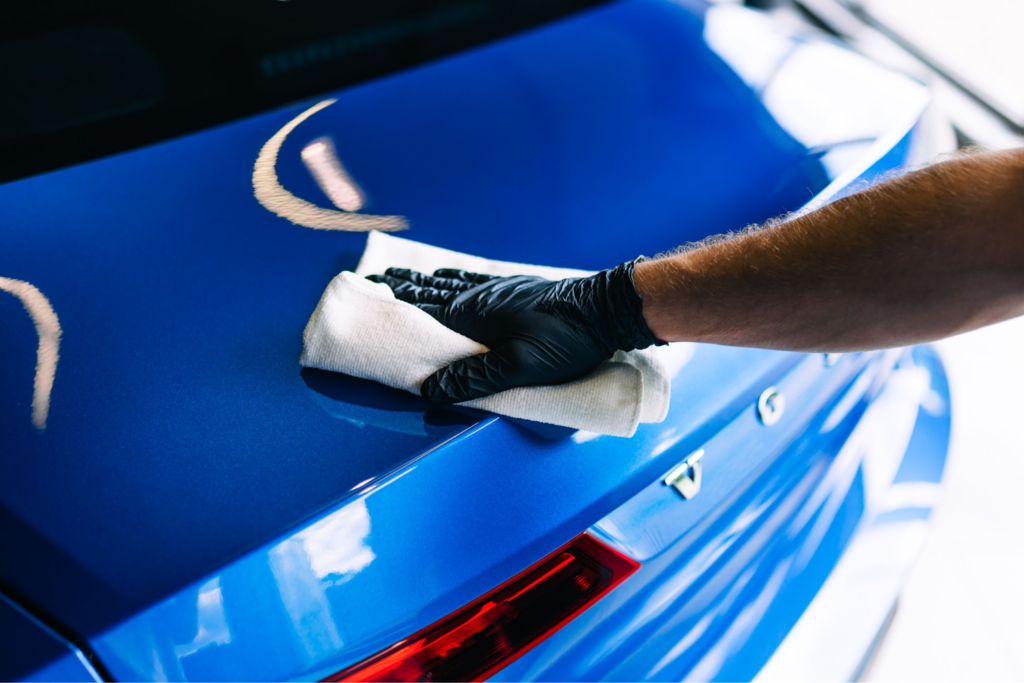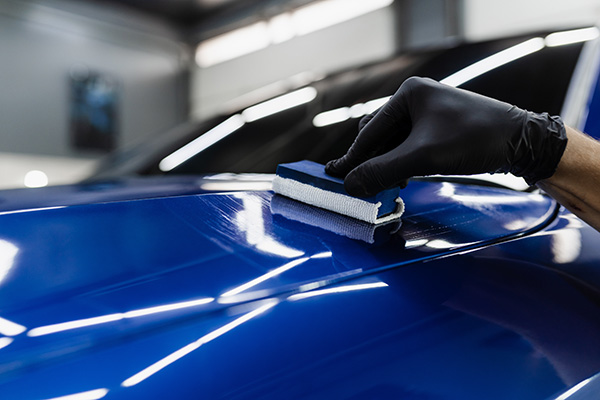The Relevance of Ceramic Coating: Securing Your Cars and truck's Outside With Accuracy
In a period where maintaining the practical and visual stability of your vehicle is extremely important, ceramic finish arises as an essential remedy. With its unique bonding properties, ceramic layer uses a level of defense that much surpasses typical waxing methods.
Advantages of Ceramic Coating
When it comes to protecting a vehicle's visual charm, ceramic finish uses considerable benefits. By developing a semi-permanent bond with the car's paint, ceramic finishings efficiently avoid oxidation and fading, ensuring that the automobile maintains a shiny, showroom-like surface for an extended duration.
In addition to its protective qualities, ceramic layer uses amazing hydrophobic buildings, triggering water and other fluids to bead off easily. This function streamlines the cleaning procedure, as dust and particles are less most likely to follow the surface area, lowering the regularity and effort needed for upkeep. Moreover, the covering's resistance to chemical spots from acidic pollutants like bird droppings and tree sap is another notable advantage, reducing possible paint damage.
Ceramic coatings likewise boost scratch resistance, supplying a layer that can absorb minor abrasions and swirl marks. This feature is particularly valuable in maintaining an excellent surface area, minimizing the chance of visible flaws and maintaining the integrity of the automobile's paintwork gradually.

How Ceramic Layer Functions
Understanding the auto mechanics behind ceramic layer discloses its efficacy as a protective solution for cars. Ceramic coatings are essentially liquid polymer applications that chemically bond with a cars and truck's manufacturing facility paint, developing a safety layer. This layer functions as a barrier against environmental pollutants such as dust, ultraviolet, and crud rays, which can degrade an automobile's exterior in time. The essential component in ceramic layer is silicon dioxide (SiO2), which stems from quartz crystals and is recognized for its exceptional hardness and durability.
Application of ceramic layer entails a precise procedure. The automobile's surface have to be completely cleaned and sanitized to guarantee optimum attachment. When applied, the fluid polymer develops a semi-permanent bond with the paint, hardening into a transparent, sturdy shield. This guard improves the vehicle's gloss and hydrophobic homes, assisting in simpler cleansing by causing water and impurities to bead and slide off easily.
In addition, the coating's molecular framework gives resistance to minor scratches and chemical spots. Unlike waxes or sealers that sit on top of the paint, ceramic coatings incorporate with the surface, using long-lasting security. This combination is essential to its performance, guaranteeing the automobile's coating continues to be pristine for many years.
Contrasting Ceramic Coating to Alternatives
In the world of vehicle defense, ceramic layer stands as a formidable choice when compared to conventional options such as sealants and waxes. While waxes provide a momentary shiny surface, normally lasting just a couple of weeks to months, ceramic coverings offer a longer-lasting option, usually sustaining for many years. This longevity is connected to the chemical bonding that happens when ceramic finishes are used, developing a solid layer that is immune to ecological dangers.
Contrastingly, sealants, although even more resilient than waxes, still disappoint the durable protection offered by ceramic finishes. Sealers can typically last for approximately a year, giving an artificial shield against particular aspects. However, they do not have the premium hydrophobic properties and UV protection that ceramic coatings supply.
Additionally, ceramic coatings use enhanced scratch resistance, which neither waxes neither sealers can effectively match. In summary, while typical waxes and sealers use standard defense, ceramic coverings offer an extensive, long-lasting option that dramatically boosts and preserves the vehicle's exterior finish.
Application Process Discussed
Applying ceramic covering to an automobile needs a thorough procedure to make sure ideal outcomes and durability. The initial step involves thoroughly cleaning the car's surface to remove dirt, grease, and previous waxes. This is essential for guaranteeing the finishing adheres properly. A pH-neutral hair shampoo and a clay bar treatment are often made use of to attain an excellent surface. Once cleaned, the vehicle is dried and brightened to get rid of any kind of imperfections, as any existing swirls or scrapes can come to be a lot more noticable after the covering is used.
Following surface area preparation, the application of the ceramic Get More Info layer begins. The coating is normally applied in a climate-controlled atmosphere to stop dirt particles from deciding on the freshly cleaned up surface. Utilizing an applicator pad, the ceramic finish is applied in little areas to guarantee also coverage. It is necessary to adhere to the producer's standards concerning the ideal curing time and application thickness.
After application, the finishing calls for a specific treating duration, throughout which the car must be shielded from water and contaminants. This curing process can differ relying on the product but normally varies from 24 to 2 days. Ultimately, this comprehensive process is crucial in achieving a glossy and resilient surface.
Upkeep Tips for Long Life
To preserve the durability of a ceramic finishing, adherence to a regimented maintenance routine is crucial. Stay clear of automated cars and truck cleans, as their severe brushes can compromise the coating's honesty.
Post-wash, drying out the vehicle with a tidy microfiber towel protects against water areas that may weaken the finish gradually. Furthermore, click here for info use a ceramic layer booster every couple of months. These boosters reinforce the hydrophobic residential properties and improve the coating's safety abilities, ensuring it continues to be efficient against impurities.
Bear in mind that vehicle parking locations play a crucial duty in maintenance. ceramic coating. Whenever feasible, park in shaded areas to decrease UV exposure, which can gradually weaken the coating. For long-lasting storage, think about he said using a cars and truck cover for added defense versus environmental aspects
Conclusion
To conclude, ceramic finish functions as a critical protective layer for lorry exteriors, offering long-lasting protection against environmental variables such as dust, grime, and UV rays. By creating a semi-permanent bond with the paint, it enhances aesthetic allure while preserving the car's worth. Its hydrophobic residential or commercial properties promote easier maintenance, identifying it from alternative safety methods. Comprehending the application procedure and sticking to maintenance recommendations are crucial for making best use of the durability and performance of ceramic covering.
When it comes to preserving a cars and truck's visual allure, ceramic layer supplies substantial benefits. By forming a semi-permanent bond with the vehicle's paint, ceramic finishings successfully stop oxidation and fading, making sure that the vehicle maintains a shiny, showroom-like surface for a prolonged duration. Ceramic finishings are essentially fluid polymer applications that chemically bond with a cars and truck's factory paint, creating a safety layer. In recap, while traditional waxes and sealers provide basic defense, ceramic layers provide a comprehensive, long-lasting solution that significantly boosts and protects the vehicle's exterior finish.
